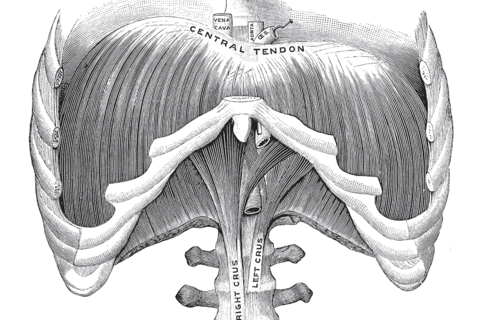Innate Human Physiological Asymmetry
Understanding the Human Body
The diaphragm, too, exhibits directional asymmetry, with a stronger, larger, and better-supported right leaflet compared to a smaller and less efficient left leaflet. The right crura of the diaphragm, with a stronger and thicker attachment, inserts along three lumbar vertebrae, whereas the left inserts into only two (Valen, 1962). Henning and colleagues (2017) and other studies have suggested that the diaphragm's respiratory mechanics and the asymmetric organ weight distribution may influence the rotational orientation of the lumbar spine to the right, a common observation in individuals (Hennig et al., 2017; Doi et al., 2011). Furthermore, a 2007 study utilizing cross-sectional magnetic resonance imaging to measure vertebral rotation in people with situs inversus totalis revealed that when internal organs are flipped, spinal curvature inversely mirrors the norm, suggesting a relationship between the asymmetrical positioning of thoracic organs and pre-existing vertebral rotation (Kouwenhoven et al., 2007).
These internal asymmetries are not merely structural but have significant implications for how our bodies function daily. They may explain the basis for laterality in individuals, or why some people heavily rely on one side of their body over the other, potentially leading to structural, behavioral, or functional asymmetries that develop over time.


Innate physiological asymmetry refers to the natural and inherent asymmetrical arrangement and function of organs and systems within the body that is present from birth. A notable example of this is the asymmetrical positioning and size of internal organs. For instance, the heart is located on the left side of the body, with the left ventricle being larger and thicker than the right, a feature that meets the functional demands of the cardiovascular system by efficiently pumping oxygenated blood throughout the body (Desgrange et al., 2018). Similarly, the left lung has two lobes compared to three in the right lung, a difference well-documented in anatomical studies (Shivaleela et al., 2018). The asymmetry extends to weight distribution, with the right side being heavier due to the larger right liver, while the left side comprises a smaller spleen and an often empty stomach (Stahl, 1965; Eitlar et al., 2022).

